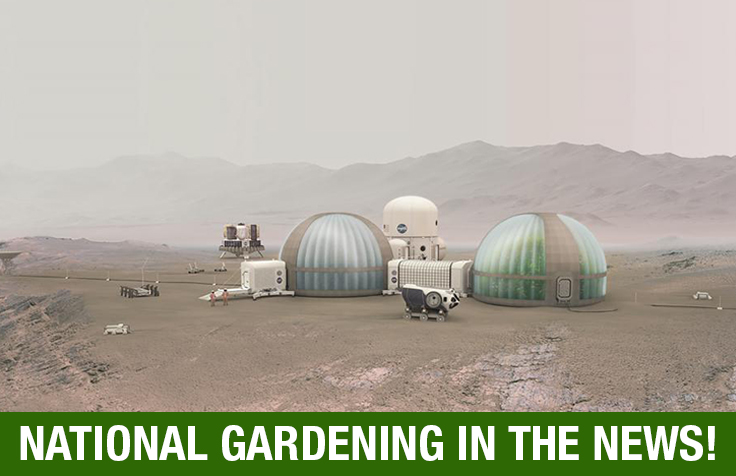
Photo courtesy UC Davis.
UC Davis students present plan for
Mars greenhouse to NASA
The UC Davis proposal made use of Martian soil for growing plants, while the other competitors used hydroponic systems. The team assessed the pros and cons of both approaches and found that while hydroponics might be easier to set up, a soil-based greenhouse would be more resilient and have other long-term benefits for the mission beyond providing fresh food.
“There is stress relief in growing plants, it has recreational and mental benefits,” said Journey Byland, sophomore in aerospace engineering, who designed the soil-processing system.
Martian soil would be collected, sterilized with an electron beam to remove any Martian microbes — just in case they exist — and treated with water to remove perchlorates, toxic chemicals common in Martian dirt.
Growing soybeans mixed with nitrogen-fixing bacteria would enrich the soil. Plant waste would be burnt to ash and put back into the soil; earthworms (from Earth) would help mix the soil and keep it healthy.
The team considered, but rejected, using human waste to enrich the soil like fictional astronaut Mark Watney did in the novel The Martian by Andy Weir. The potential health problems are too complicated with a multiperson crew, they said.
A 1967 United Nations treaty calls on member states to avoid contamination of other planets with Earth microbes, or bringing alien microbes into the Earth environment. The agreements and NASA policies stemming from the “Outer Space Treaty” mean that all the Martian soil coming into the greenhouse has to be sterilized and that at the end of the mission, the greenhouse’s plants must all be destroyed and thoroughly sterilized. Winning competitors are eligible for NASA summer internships.
